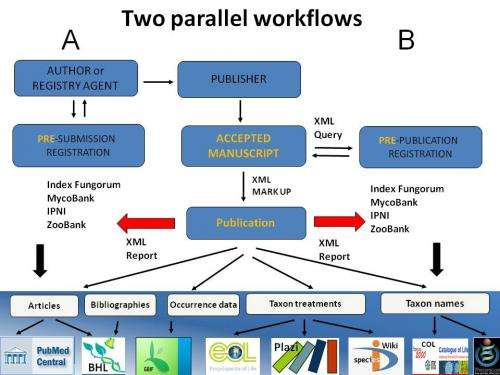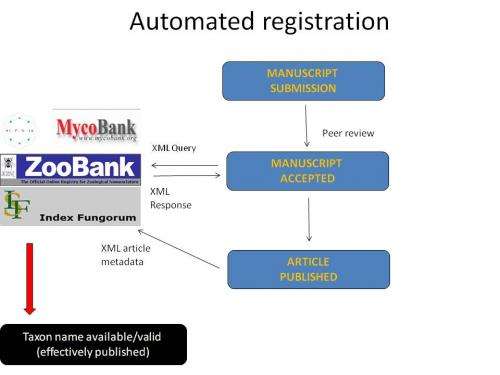Next-generation global e-infrastructure for taxon names registry

The latest issue of ZooKeys - no. 346 - has been automatically registered in ZooBank on its day of publication last Friday. This marks the successful deployment of an automated registration-to-publication pipeline for taxonomic names for animals. The innovative workflow was jointly funded by the EU FP7 funded project pro-iBiosphere and a U.S. National Science Foundation project to develop the Global Names Architecture (DBI-1062441).
The process of post-publication recording and indexing of species names has a long tradition, in some cases dating as far back as the middle of 19th century. But now in the 21st century with the advance of modern technologies and the opportunity to publish taxonomic novelties online, the process of post-publication recording brought into focus the concept of automated pre-publication registration.
Why is this important? The proportion of 'turbo-taxonomic' papers describing hundreds of new species increases. Registration of hundreds of new species is an issue, however it is even more important that the final publication data of the pre-registered names are reported back to ZooBank on the day of publication.
Launched as an open access peer reviewed journal in 2008, to coincide and adopt from inception the International Code of Zoological Nomenclature changes for electronic publications, ZooKeys was the first journal to provide a mandatory in-house registration in ZooBank. Since 2008, it has contributed about one third of all names currently registered in ZooBank. With the adoption of the automated ZooBank registration, ZooKeys continues its mission to set novel trends in biodiversity publishing.

Implementation of automated workflows and invention of XML-based tools will facilitate the process of publication and dissemination of biodiversity information. It will pave the way for unification and streamlining the registration process, even more to building the next-generation e-infrastructure for a common global taxon names registry. Within the pro-iBiosphere project and in cooperation with Plazi that have created the TaxPub XML schema, an automated registration workflow for plants has already been established between the International Plant Names Index (IPNI) and the PhytoKeys journal, to be applied soon also for fungi between Index Fungorum and the journal MycoKeys.
Provided by Pensoft Publishers
















